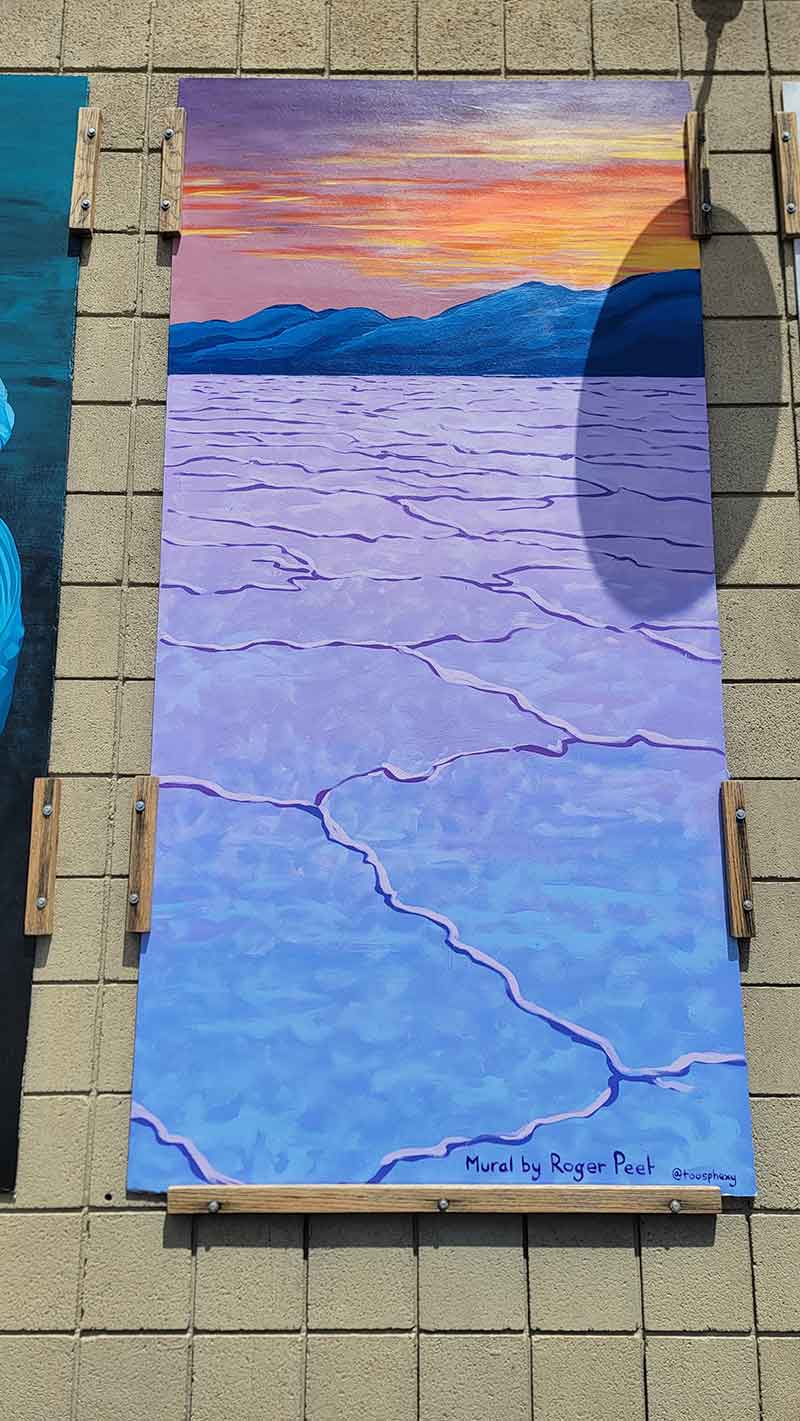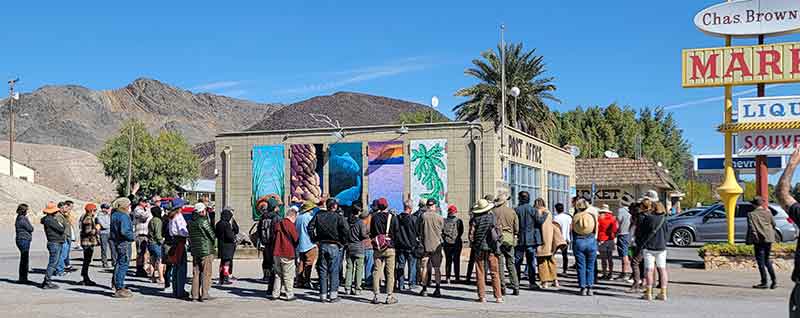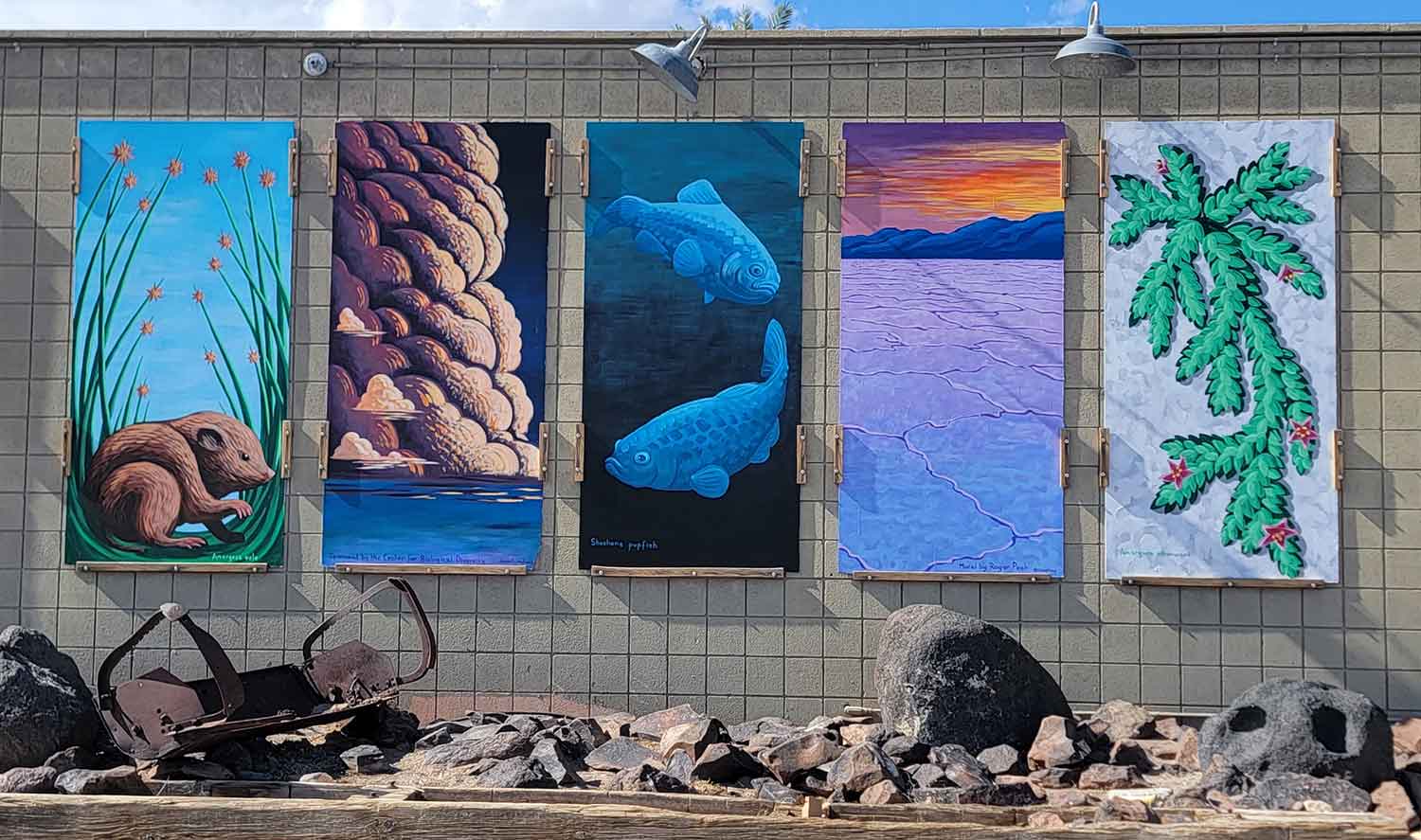A new entry in the ongoing Endangered Species Mural Project just wrapped up in the small village of Shoshone, CA, on the edge of Death Valley. The mural is on the south side of the Post Office, and features three species found in this area and nowhere else: the Amargosa vole, the Shoshone pupfish, and the Amargosa niterwort. These three species are reliant on the scarce water available in this harsh desert environment, which is threatened by overuse, pollution, exotic and introduced species, and the expansion of climate-change related drought.
The Amargosa vole is a small rodent that lives in the marshy wetlands associated with the Amargosa river, the watercourse which is the lifeline of this region and which flows largely underground, through limestone caves and aquifers. The deep-green triangular stalks of sedges, seepweeds and grasses waving above the blasted gypsum flats of the valley lowlands are signs of suitable habitat for the vole, which at this point consists of a mere 247 acres. The town of Shoshone itself is named for the pre-settlement indigenous peoples of the region whose descendants still inhabit the area, and it became the property of a single ranching family during white settlement of the region, after which the voles were trapped out entirely to stop their interference in alfalfa harvest. They have since been reintroduced under the current owner of the town, who has made significant efforts at restoration.
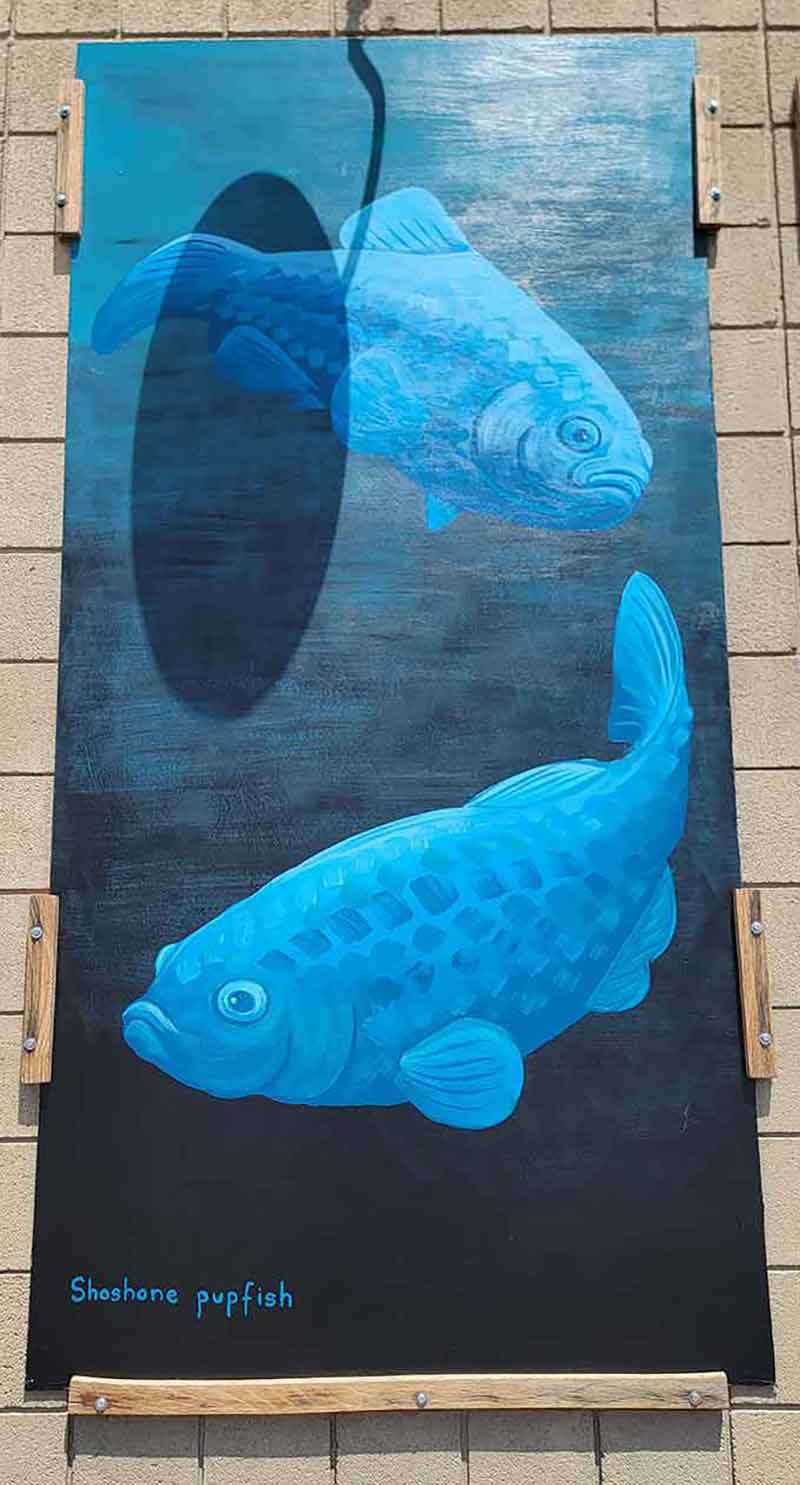
That restoration has also affected the populations of the Shoshone pupfish, one of the most endangered species of fish in the world. The valleys of the desert southwest are home to a surprisingly large number of endemic and distinct fishes, relics of former eras when the valley bottoms were home to vast freshwater lakes. As climate has changed, the water available has diminished to just a few spring outflows dotted across the bleak lava and tufa expanses of the Mojave- and each spring now hosts a distinct species of the pupfish that once inhabited the lakes. These fish are often adapted to extremely harsh or unusual conditions of heat or chemical concentration. The Shoshone pupfish is found in only a few small pools within Shoshone village. One great irony of pupfish biology is that they are very hardy and aggressive fish, and in different circumstances might be quite determined invaders of novel aquatic habitats.
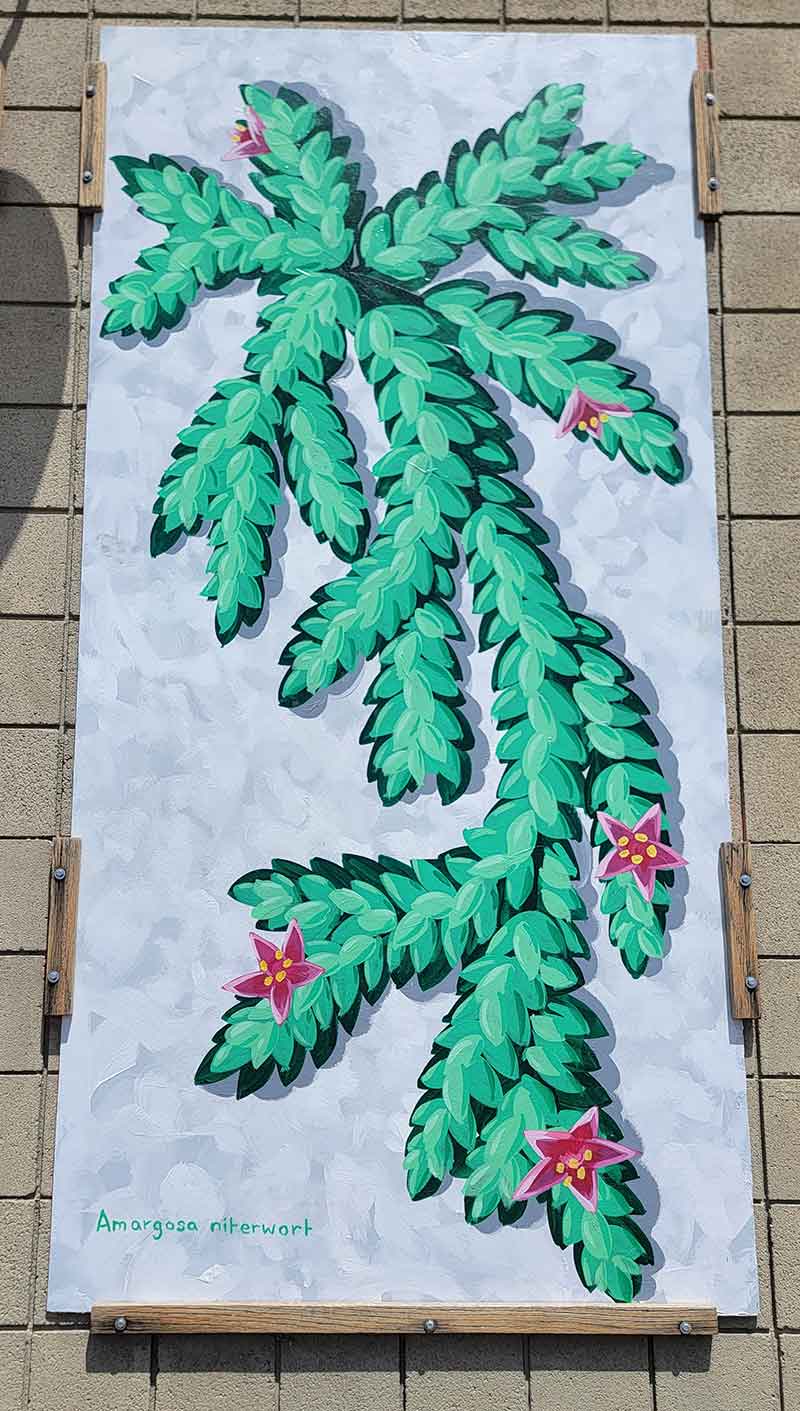
The third subject is a plant called the Amargosa niterwort, a chenopodium or relative of quinoa and amaranth which is found only in the Ash Meadows wildlife refuge just north of Shoshone. It is adapted to life in salt-encrusted clay soils where most other plants would find life impossible, and endures the blazing heat and frigid winters of Death Valley with calm equanimity. As farming in the region draws down the water table that feeds the niterwort’s roots, it has been steadily dwindling. Off-road vehicle activity in the Carson slough where it’s found doesn’t help.
Why care about these things when there is so much more immediate suffering within our communities? The best explanation for this is a crisis that we ignore even as we try to turn our attention to so many of the problems that surround and overwhelm us: loneliness. We live, increasingly, in a world where all we have is each other, as humans. We have so little to teach each other, and so much to learn that leads us down the most awful paths. The loss of the vast diversity of the world dooms us to a solitary life of desperation, where we will never be able to imagine another way to live. If the struggle for a just material life is a dialogue between people and the natural world, it behooves us to try to maintain as much of that world as possible; so we will have something to learn from outside of our own mistakes.
The project is sponsored by the Center for Biological Diversity, many thanks to colleague Patrick Donnelly who co-coordinated this with me. See the rest of the murals from the project here. If you have a wall in your town that you think could host one of these, get in touch.

